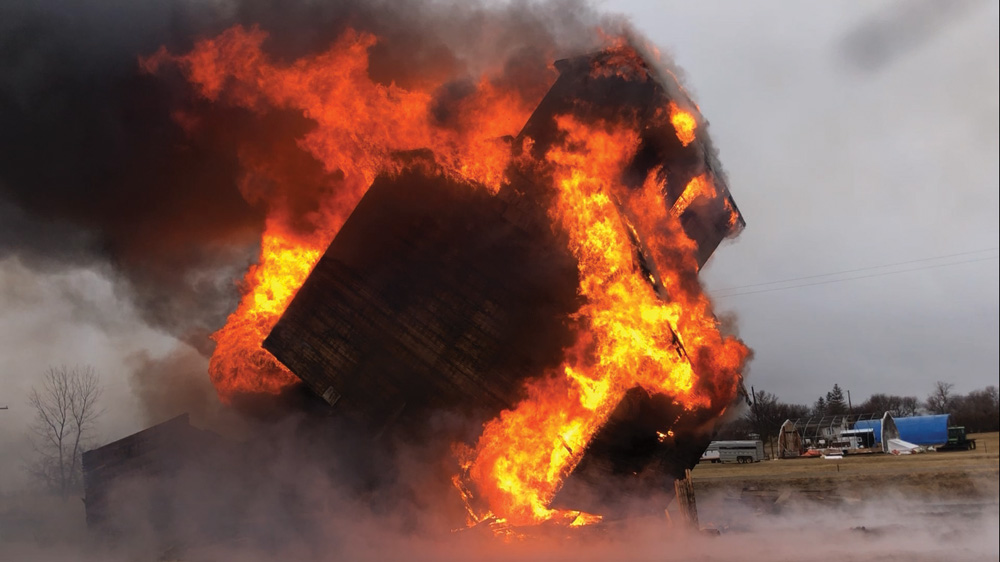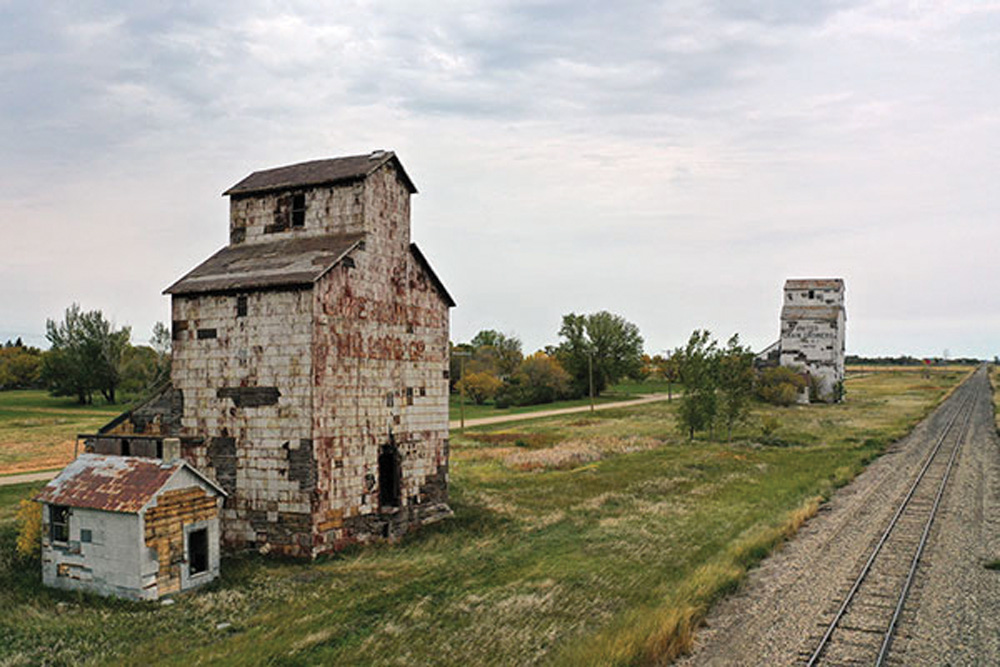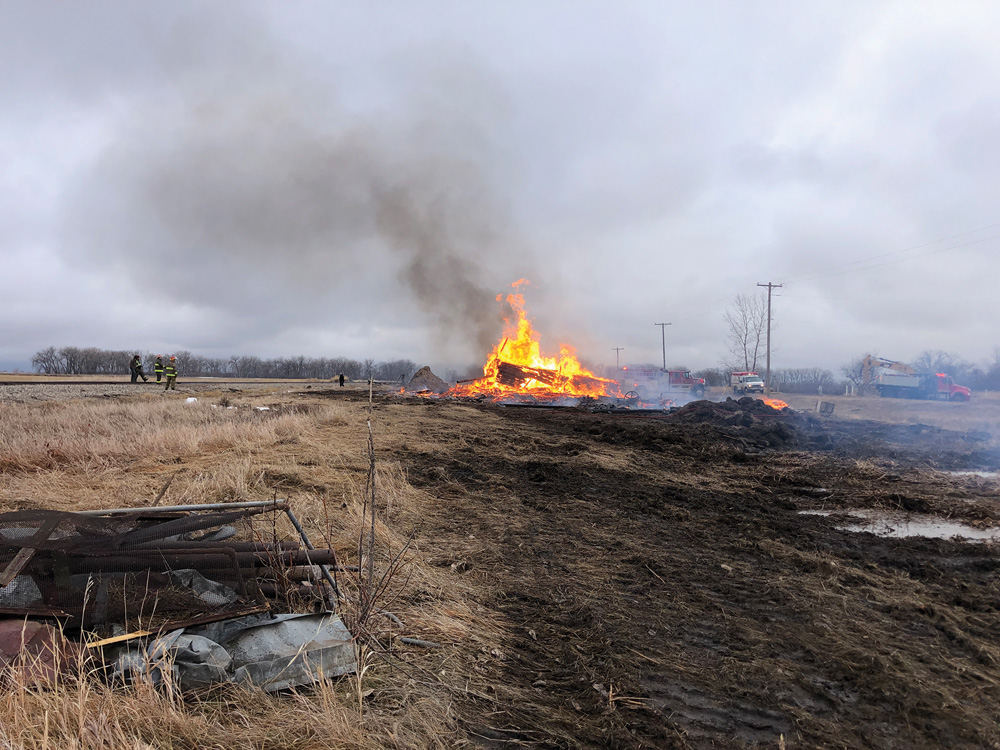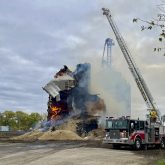It wasn’t supposed to end like this.
Troy Angus and his crew watched a single spark float up the historic grain elevator at Elva, in the far southwest of the province, and lodge in a hole no larger than a football.
Read Also

PepsiCo nearly doubles regenerative scope
Another 240,000 farm acres managed through regenerative agriculture will be supported by PepsiCo across Manitoba and Saskatchewan by the end of 2025.
“It was literally smoke on contact,” Angus said.
Initially he was in denial, telling himself the flash of orange was just a flag — but there was no flag on the elevator. It was fire.
It was April 5, and they’d been burning garbage at what they thought was a safe distance in the community just southwest of Melita. Minutes later, the 125-year-old structure was a heap of embers.

But for the elevator that was once the oldest of its kind in Canada, this is not quite the end.
Why it matters: While salvage efforts were cut short, the crew transforming the historic elevator in Elva says not everything was lost when the main structure caught fire earlier this month.
Biologist turned amateur historian Gordon Goldsborough had made his peace with the loss of the elevator before it burned. He knew it couldn’t be restored.
Goldsborough is the president of the Manitoba Historical Society and secretary for the Manitoba Agricultural Museum. His archival research had been what determined the Lake of the Woods Milling Company elevator at Elva was the oldest of its kind in Canada.
Grain company maps and records traced it back to 1897. While across the province from the Lake of the Woods, the roughly 25,000-bushel elevator was a weigh point for grain headed to the mill in what is now Kenora.
Around the elevator, agriculture and grain marketing changed rapidly. In 1959, Manitoba Pool bought the elevator, but by 1968 it had outlived its usefulness. A private owner bought it, and it fell into disuse.
Unmaintained, the elevator began to deteriorate. Goldsborough said that when he last visited it in fall 2021, he was dismayed at its state. The elevator had developed a tilt on its rotten foundation.
“It was an accident waiting to happen,” Goldsborough said.
Despite its historic status, the chance to turn it into a heritage site had passed.
Because it sat in the sparsely populated southwestern corner of the province, Goldsborough said making it into a museum might not have been feasible anyway. It was too out of the way to be a tourist trap.
“You need to ensure there’s enough business to keep it busy,” he said.
As best he knows, Goldsborough said the elevator and the nearby United Grain Growers elevator — newer by 20 or so years — reverted to municipal property after the owner died.

Reclamation
The usual fate of derelict elevators is to be tipped over, crunched into pieces and burned or hauled to the landfill, said Goldsborough.
When the municipality sold the elevators, however, they were slated to receive an unexpected new lease on life — albeit in pieces.
Troy Angus began reclaiming old buildings by repurposing a 10×12-foot granary into his house, set on his grandparents’ farm.
He then progressed to reclaiming old houses and barns, carefully dismantling them for their antique hardware, weathered tin, planks and beams. He made it his business — The Den Authentic Barnwood — and sells the reclaimed materials to do-it-yourself enthusiasts.
Customers include those who love the story of the materials and want their own piece of history. Others want to support recycling of the heritage material, while yet others just really like how the aged items look.
“You will not find anything else like it,” Angus said.
The elevators at Elva were not the first he’d dismantled, but the Lake of the Woods elevator was to be his crown jewel.
Angus began a video series on his company’s YouTube channel, showing the elevator pre-dismantling, talking about its history, and chronicling the process of taking it down.
The project was to go forward in stages. Angus and his team removed all the tin they could reach, including the painted “Lake of the Woods Milling Co.” sign.
They recovered any parts of the office that were salvageable, along with the elevator’s scales, the cups from the leg, and hardware like door handles and coat hooks.
They were only four days away from tipping the elevator “crib” onto its side so the last of the tin could be removed and the crib could be dismantled, when the structure burnt.

The crib was built from hardwood planks stacked and heavily nailed together. It would have provided the majority of the in-demand antique lumber from the site.
It’s difficult to quantify how much material they lost, Angus said.
“We were able to intercept these elevators from being destroyed by fire, but the ironic part is our efforts in trying to save this elevator resulted in fire,” he said. “I’m still boggled by that.”
One last hope
It may seem sacrilegious to history-lovers, but reclamation was the elevator’s best hope to live on, according to Goldsborough.
“Much as it pains me to say it — I’d like to think they would all still stand and be there for many, many years to come — it’s just not going to happen,” he said. “Better to have it salvaged and turned into something useful.”
“It was kind of nice to think it would live on in people’s homes,” he added.
It will — although less of it. The “Lake of the Woods” sign, for instance, has been purchased and will “retire” to the shore of the very lake it’s named after, Angus said. It will be an amazing showpiece, he added.
Despite the “terrible waste of a possibility” at Elva, Goldsborough said he hoped Angus and others would salvage more elevators that await a similar fate.















